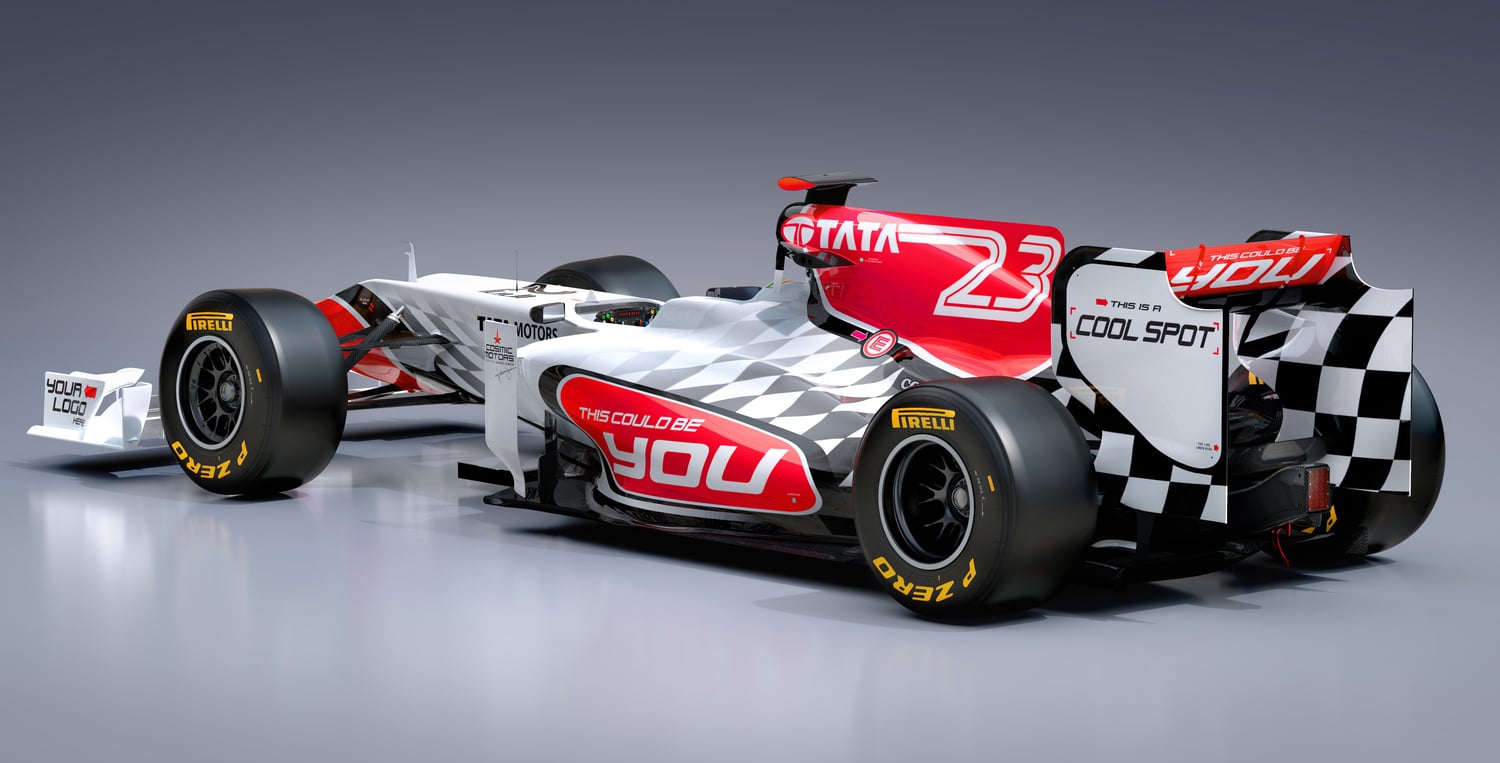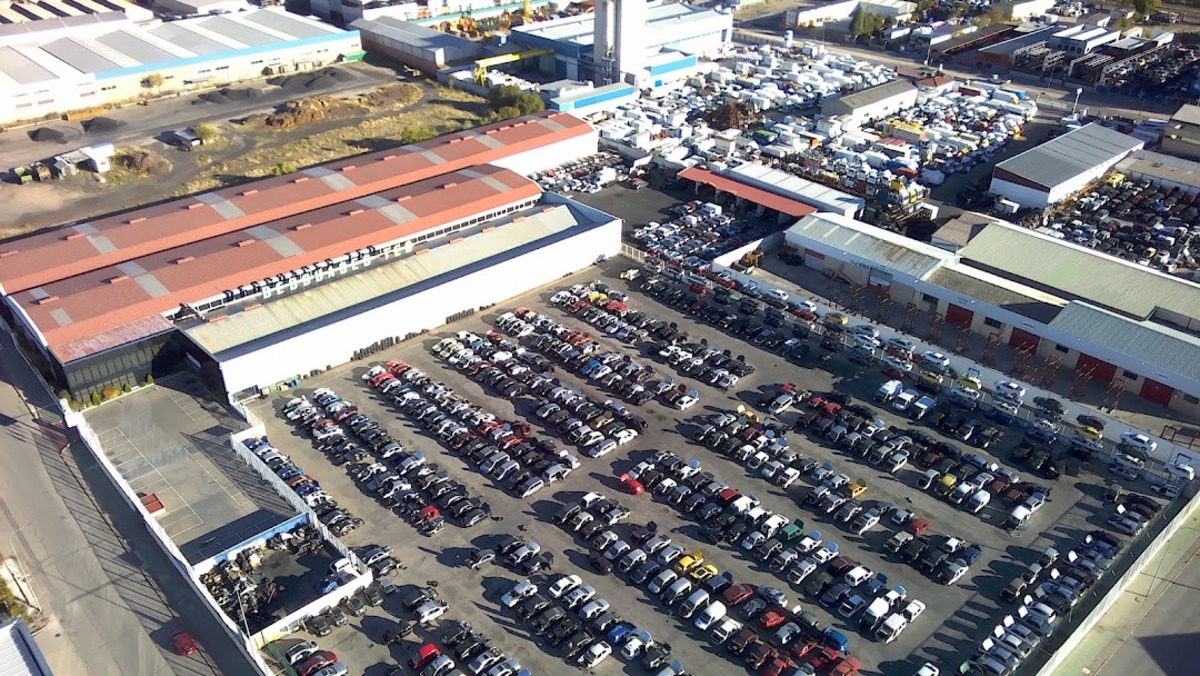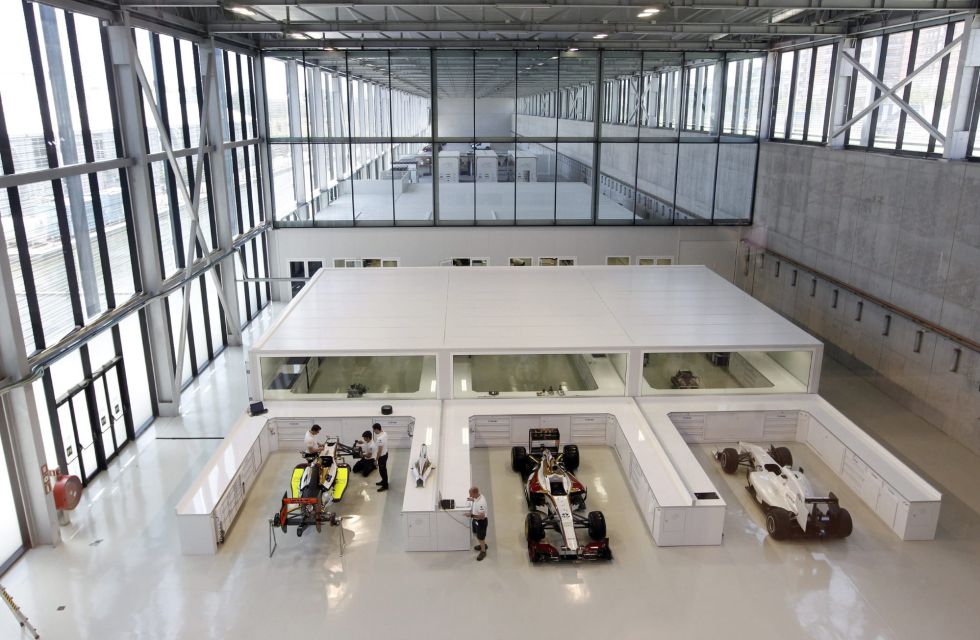
El HRT (formerly Campos Meta 1 and Hispania Racing Team) It was a team of Spanish origin, as you may know. Its foundation was due to the late Adrián Campos, a benchmark of motorsport in our country. When Formula 1 opened candidacies for new teams to enter, it was one of those that took the opportunity to do so, along with Virgin Racing Team (Marussia F1 Team) and Team Lotus (Caterham F1 Team), and the candidacy of the American USF1 was rejected. .
His goal was to compete in Formula 1 as of the 2010 season, registering in 2009. This is how HRT became the first Spanish team to complete an entire season in Formula 1. And if you want to know more about the history of this Spanish foray into F1, I invite you to continue reading...
Background
Before HRT there was Other Spanish attempts or projects to enter F1, but without much success. However, it is interesting to know them before going on to talk about the team that I am going to deal with here:
Pegasus Spain

The team Pegasus Spain It was a Spanish automobile initiative created in 1954 with the purpose of competing in Formula 1, the car with which Franco wanted to position the country in the world of competition. Their initial goal was to test and, if they had good results, enter races.
The single-seater designated for this project was the Pegasus Z-105, but sadly it never materialized beyond the blueprints due to a lack of budget. However, the Pegaso España team managed to pre-register for the 1954 Spanish Grand Prix with a single car and with the number 32. However, due to the lack of financial support, it would not compete and the team did not would present in the circuit.
On the other hand, it seems that the Pegaso Z-105 was based on a car created by Wifredo Ricart, the Alfa Romeo 512, which would imply a rear mid-engine layout. The engine would have a capacity of 2.5 liters, with four cylinders in line, double overhead camshafts and hemispherical combustion chambers, in addition to having a mixed air and water cooling system. As for the chassis, it is known that it would be multitubular and would be equipped with four-wheel independent suspension.
Iberia Airlines F1

Iberia Airlines F1 was a private Spanish Formula 1 team founded by the pilot Emilio de Villota, father of our beloved María. He competed as an "international competitor" in 7 Grands Prix during the 1977 European season, managing to qualify in two of them, but without scoring points.
La Iberia airline he became the main sponsor of this venture. With no infrastructure for aerodynamic and engine development, Emilio de Villota, as driver and team manager, bought a McLaren M23 with a 500 hp Ford Cosworth engine and formed a team of six people.
In 1977, the participation of private teams was allowed without the obligation to present a minimum number of vehicles or to participate in all the races of the season. These teams, often in precarious situations, had to go through a round of pre-qualifying before the qualifying session on Saturday, where the vehicles that registered slower times than the 24th best would be disqualified, a kind of cut time, something similar to what was applied in times of Hispania and HRT with 107%.
These limitations and the advantages granted to the official teams, such as an additional set of tires before the qualifying session, made it difficult to qualify for the Grand Prix. However, Emilio de Villota managed to qualify in the Spanish Grand Prix (finishing in 13th place) and in Austria (ranking in 17th position).
bravo f1

The project bravo f1 began in mid-1992 under the direction of Nick Wirth, with the aim of participating in Formula 1 in the 1993 season. During its preparation year, in 1992, in December it would be declared illegal, which led to the abandonment of the project by beginning of 1993.
The team was characterized for being an English project, although the car had Spanish nationality. The team was founded by Adrián Campos, while the designers were Nick Wirth and Jean-Pierre Mosnier. It used a chassis from an old Andrea Moda car and a Dallara gearbox, while the engine was a Judd V8, and its main sponsor was El Mondo, along with some small Spanish companies.
The car was completed in November 1992, and the team had a budget of 3.000.000 of dollars. A very low budget that led the project managers to consider whether to put the project aside for a moment and get more financial capital to carry it out.
But this was not all, the model that was called Bravo S931.1 was banned by the FIA because it failed crash tests or impact tests. It was not safe to participate and, finally, given the low budget, this problem could not be solved and the project would be abandoned.
and the pilots Jordi Gené, Luca Badoer, Ivan Árias and Nicola Larini They were the ones considered to drive for the team, they even contacted Damon Hill without success.
HRT history
Now that you know the background to HRT, let's jump right into describing the history of this team that moved so much and that finally ended up disappearing, along with the other three with whom he entered F1:
HRT Foundation
- First Hispania Racing F1 Team logo
- Second logo HRT Formula 1 Team
During the 2008 year, the global financial crisis began to raise doubts about the participation of various teams in Formula 1. This put the Formula 1 World Cup at risk, if it ran out of enough teams. Teams like Honda, Toyota, and BMW left F1. For this reason, the FIA started a selection process to grant up to four new competition licences. As a result of this process, Adrián Campos and his project “Campos Meta” were one of the three selected.
The engines for the single-seaters would be Cosworth, in the return of the British engine manufacturer to Formula 1, the same as for the other two new teams. In addition, they would have a chassis designed by the Italian manufacturer and designer Dallara, and then they themselves would evolve with new features.
The team represented the achievement of an almost entirely Spanish Formula 1 team, both in terms of capital and in its structure made up of employees of the Campos Racing team, with years of experience in motorsports competition. In addition, they also recruited several prestigious engineers such as Tony Cuquerella, former BMW F1 engineer, Daniele Audetto, former Honda team principal and member of the circle close to Bernie Ecclestone and Luca Di Montezemolo, and the professor from Tenerife Tomás Gutiérrez, as Enrique Colomina, director of mechanics, José Julio, financial director, and Javier Bono, director of logistics.
However, the project was soon affected by the economic crisis, whose impacts were already evident in Spain. To save the situation, the businessman José Ramón Carabante joined the team, but this resulted in the departure of Adrián Campos, and other problems that we will see later.
A team leader was needed, and for this they outsourced the services to Colin kolles, who would operate the equipment using their own infrastructure and staff. The team was renamed as Hispania Racing Team F1, in reference to Hispania, the name of the Carabante business group. Everything was ready for the following year, the year of debut...
The first season (Hispania F110)

La 2010 season It was marked by economic difficulties that almost put an end to the project. Despite this, the team managed to debut with an uncompetitive car, with two rookie drivers at the wheel, one was the Brazilian Bruno Senna, and the other the Indian Karun Chandhok. The first came to compete throughout the season, the second only 10 races, when he would be replaced by Sakon Yamamoto. Christian Klien would also run two GPs as a substitute.
Lacking their own infrastructure, the team relied on the services of Colin Kolles, who, from his position as "main team", used his own infrastructure and technicians to operate the equipment. In this way, the team outsourced all the services necessary to compete, including those provided by Kolles and his team.
The best results would be three 14th, obtained by Chandhok in the Australian and Monaco Grands Prix, and by Senna in Korea. These results allowed the team to secure eleventh place in the team standings, beating Virgin and just behind Lotus, albeit without scoring points.
The poor results obtained by the rookie teams and their lack of competitiveness generated a debate throughout the season, being nicknamed as "mobile girls" due to the frequency with which they were lapped by the leading cars during races. This controversy led to the reintroduction of the 107% rule starting in 2011.
The second season (Hispania F111)

HRT F111 design for the 2011 F1 season. Livery designed exclusively by Daniel Simon of Cosmic Motors. Copyright HRT Racing / Daniel Simon
The team decided to carry out a complete remodeling of its car in 2011. Rumored deal with defunct Toyota team scrapped to acquire his car designed for the 2010 season, which never competed in Formula 1. Rumors also arose about the possible participation of Pedro Martínez de la Rosa as official driver, but Italian Vitantonio Liuzzi, from Force, was finally chosen. India, who had lost his seat to Paul di Resta, and India's Narain Karthikeyan, backed by Tata Motors and other Indian sponsors.
For second consecutive Year, the team failed to get their car ready for pre-season testing, resulting in another rushed debut without prior testing in the first race of the season. As a consequence, none of the pilots managed to exceed the 107% limit. The cars were always last, and their opponents were somewhat stronger, although at the end of the season they were able to catch up with Marussia Virgin.
The season was again marked by instability in the driver lineup. Narain Karthikeyan held the starting job for the first eight races before handing over his place to Daniel Ricciardo, at the time a young rookie to Red Bull's driver development programme. Karthikeyan resumed the starting job at the Indian Grand Prix, this time taking over from Liuzzi, who competed in all races except that one.
El Italian Liuzzi achieved the best result in HRT history by taking 13th place at the Canadian Grand Prix, which helped the team pass Virgin, renamed Marussia, for the second year in a row and finish in eleventh position.
Unfortunately, everything was marred by other more relevant events that occurred off the track. José Ramón Carabante, whose Hispania business group was facing financial and legal problems, left the team. In July 2011 it was announced that the Spanish investment group Thesan Capital would take over the management, and they communicated their intention to make the team more Spanish by establishing their headquarters in Spain and further Spanishizing the team...
The third and final season (HRT F112)

The 2012 season was marked by the implementation of "Spanishization" of the team by Thesan Capital. Kolles was replaced by Luis Pérez-Sala, a former Minardi driver, as director. The team was temporarily established in the Technological Park of Paterna and then moved permanently to the Caja Mágica building in Madrid in February 2012. HRT began to have its own staff and resources, although the manufacturing of components was still outsourced, the The team used the Mercedes wind tunnel under an agreement with that team. The engine remained the same and the chassis as well, only evolved and adapted to the new rules of the season.
Pedro Martínez de la Rosa became an official pilot. Tata group-backed Narain Karthikeyan took the other starting seat in his second year with the team. The Spanish Dani Clos, from GP2 and HRT's young talent promotion program, and the Chinese Ma Qing Hua, were the test drivers. Both participated in the first free practice sessions as rookies. Several Spanish sponsors joined the team.
However, the season was again affected by the lack of running-in on the new car during pre-season. For the third consecutive year, they had not been able to test and the debut was a failure to qualify for the first race in Australia, since both drivers exceeded the 107% limit in the qualifying phase. Although the fiasco was not repeated, it was common to see HRT closing the grid and the classification, this time they distanced themselves further from Caterham and Marussia.
Despite the fact that there were improvements in the car, mechanical problems, such as overheating of the brakes, meant that they could not squeeze the most and managed not to finish last. In fact, the best position was that of Karthikeyan at the Monaco GP, where he would get a 15th. During the season, De la Rosa regularly outperformed Karthikeyan in both qualifying and the race, although the problems did not help the Spaniard to get that better position…
And here the journey ended of the Spanish team. HRT disappeared after three seasons that were almost agonizing due to lack of budget, but they knew how to fight with what they had.
The current legacy
- Auto-Recycling Teo Martin
- Magic Box – Madrid (Headquarters)
Company scrapping Auto-Recycling Teo Martín, was the one that acquired the remaining pieces of HRT. Teo Martín, a leading figure in Spanish motorsports with more than 40 years of experience, has taken charge of the vehicles, furniture and tools that were at the Caja Mágica headquarters.
What was left of the HRT Formula 1 team has found its new destination in a scrapyard. as if it were scrap, an undeserved place for what has been the most outstanding team in F1 with a Spanish pedigree. It seems that the single-seaters purchased are those of 2012 and 2011, in addition to the equipment truck, tools, machinery, furniture, etc. The engines were returned to Cosworth, the gearbox to Williams, where it belonged, and nothing is known about the first 2010 car.
and i wonder reflection modeWhat would have happened if they had used the Toyota car, which was a great single-seater. What would have happened without the financial problems and if the Spanish companies had valued and supported the team, such as Telefónica, Repsol, Iberdrola, etc. Things would have been very different perhaps. In addition, there was also talk of a possible association between Campos Racing and Epsilon Euskadi, another of the greats of Spanish motorsport and which has achieved success in other categories. Currently we only have this legacy left and the Campos Racing team that competes in other categories and where it does not go badly...
A shame... Will there be another Spanish project in the future? You never know, but for now it's something far away... Between the new candidates to enter there is no Spanish.


